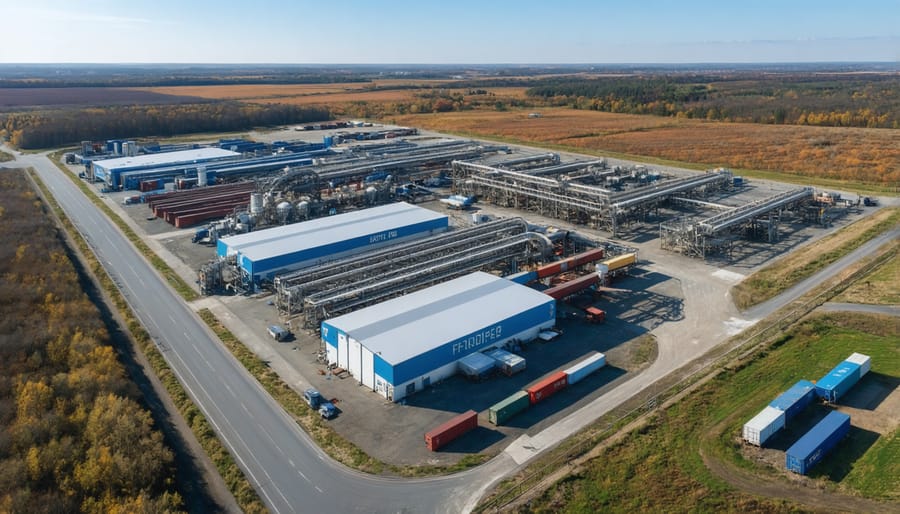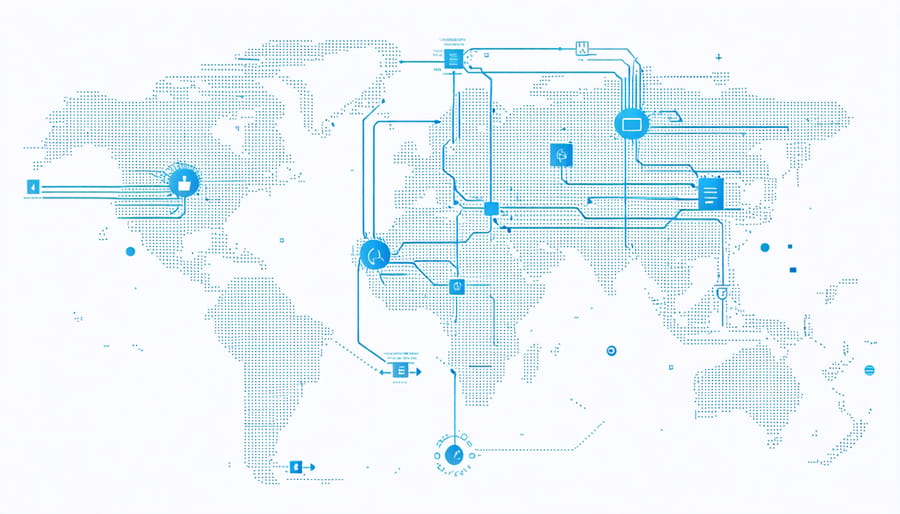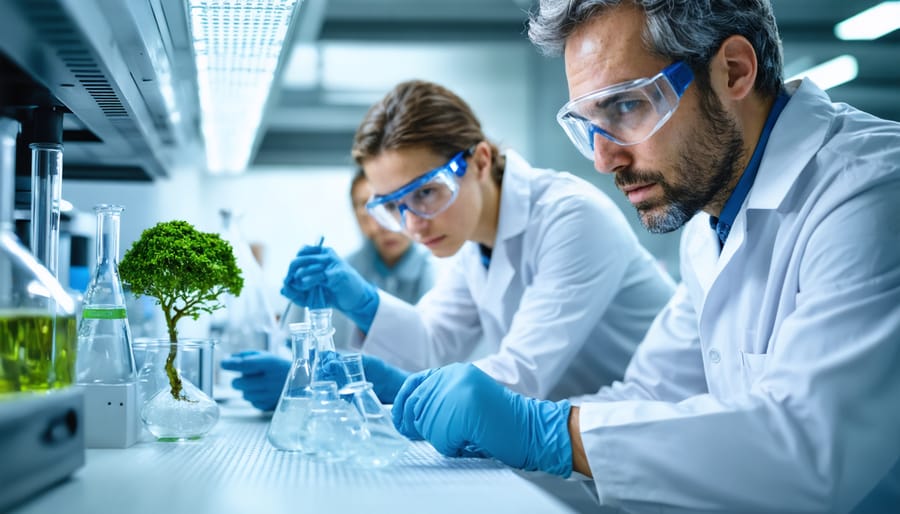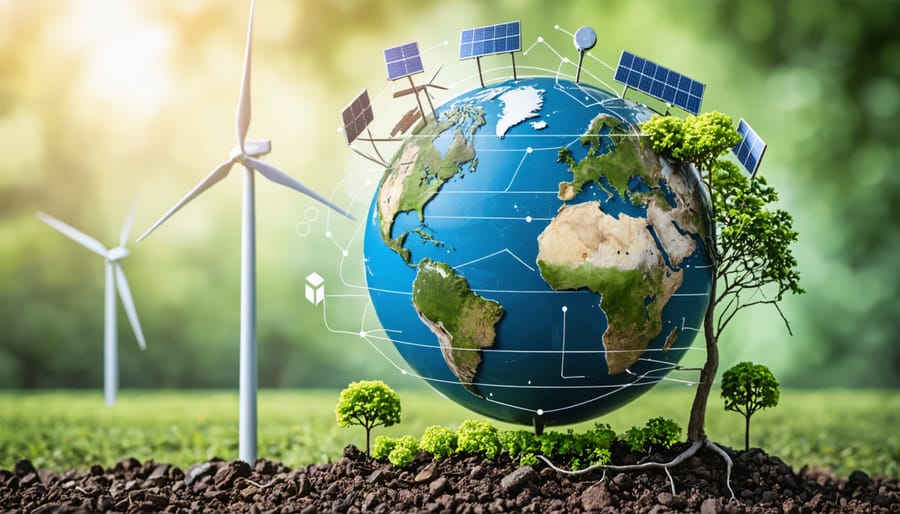Global bioenergy stands at the forefront of our planet’s sustainable future, revolutionizing green energy systems across continents. From sugarcane fields in Brazil to eucalyptus plantations in Australia, this renewable powerhouse already supplies over 10% of the world’s total energy needs, transforming agricultural waste and purpose-grown crops into clean, reliable power.
The beauty of bioenergy lies in its versatility and accessibility. Unlike some renewable alternatives, it provides baseload power generation while supporting local farming communities and creating sustainable job opportunities. In Australia alone, bioenergy projects have sparked regional development, turning agricultural by-products into valuable energy resources while reducing landfill waste and greenhouse gas emissions.
As global markets increasingly embrace renewable solutions, bioenergy emerges as a unifying force, bridging traditional energy systems with innovative sustainable practices. Its potential to foster international cooperation, enhance energy security, and drive rural economic growth makes it not just an environmental imperative, but a compelling business opportunity for forward-thinking nations and organizations committed to a cleaner, more sustainable future.

The Power of International Bioenergy Collaboration
Knowledge Sharing Networks
In today’s interconnected world, knowledge sharing networks form the backbone of global bioenergy advancement. These collaborative platforms bring together researchers, industry experts, and policymakers from different corners of the globe, fostering innovation and accelerating the adoption of sustainable energy solutions. Australia has emerged as a key player in these networks, particularly through its participation in the annual International Biomass Conference, where local experts share their unique insights on managing biomass resources in arid conditions.
The IEA Bioenergy Technology Collaboration Programme has been instrumental in connecting Australian researchers with international counterparts, leading to breakthrough developments in agricultural waste conversion and sustainable forestry practices. These partnerships have helped regional communities adopt tried-and-tested solutions from similar climates worldwide, while sharing our own innovations in eucalyptus-based biofuels.
Digital platforms and virtual research hubs have democratised access to bioenergy expertise, enabling even remote Australian communities to tap into global knowledge pools. Success stories include the Victorian Biomass Exchange Program, which adapted Scandinavian forest management techniques to local conditions, and the Queensland Sugar-to-Biofuel Initiative, which benefited from Brazilian expertise in sugarcane-based ethanol production.
These networks continue to evolve, with emerging technologies like blockchain now being used to track biomass supply chains and verify sustainability credentials across borders, ensuring that knowledge sharing leads to practical, measurable outcomes.
Technology Transfer Success Stories
The Global Bioenergy Partnership between Brazil and Sweden stands as a shining example of successful technology transfer. In 2018, Swedish biogas expertise helped transform Brazil’s sugarcane waste into clean energy, creating a model facility that now powers over 50,000 homes in São Paulo state.
Another remarkable success story comes from our own backyard. The partnership between Australian and Indian researchers led to the development of advanced biomass processing techniques that turned agricultural waste into biofuel. This collaboration, initiated in 2019, has already resulted in three commercial-scale facilities across rural India, providing clean energy to farming communities while reducing stubble burning.
In Southeast Asia, a groundbreaking collaboration between Thai and German engineers revolutionised palm oil waste management. The technology transfer enabled Thailand to establish five biogas plants that process palm oil mill effluent, generating both electricity and organic fertiliser. This initiative not only solved a waste management challenge but also created hundreds of local jobs.
Perhaps most inspiring is the Africa Biogas Partnership Programme, where Dutch expertise helped establish over 100,000 domestic biodigesters across Kenya, Tanzania, and Uganda. This grassroots initiative transformed household waste into cooking fuel, significantly reducing deforestation and indoor air pollution while empowering local communities with sustainable energy solutions.
These success stories demonstrate how international cooperation in bioenergy technology can create lasting positive impact across different contexts and cultures.
Australia’s Role in Global Bioenergy Innovation
Local Innovation Going Global
Australia’s bioenergy innovations are making waves across the globe, showcasing how local ingenuity can drive international progress in renewable energy solutions. From the sugar cane fields of Queensland to the waste management facilities in Victoria, Australian technologies are revolutionizing how the world thinks about sustainable agriculture and clean energy.
A standout example is the pioneering work of Brisbane-based BioCane Technologies, whose bagasse-to-biofuel system has been adopted by sugar mills in Brazil and Thailand. This innovative process transforms sugar cane waste into high-grade biofuel, reducing waste while creating valuable energy resources.
Meanwhile, Melbourne’s WasteTech Solutions has partnered with municipalities in Southeast Asia to implement their award-winning organic waste conversion technology. Their system, which turns food waste into biogas and premium fertilizer, has already been successfully deployed in Singapore and Malaysia, with plans for expansion into Indonesia.
The CSIRO’s advanced anaerobic digestion technology, developed in Perth, is another success story. This system, which processes agricultural waste more efficiently than traditional methods, has caught the attention of European agricultural communities. Several pilot programs are now underway in Germany and Denmark, demonstrating how Australian innovation can help solve global energy challenges.
These international collaborations aren’t just about exporting technology – they’re creating valuable knowledge-sharing networks. Australian researchers and engineers regularly exchange insights with their global counterparts, leading to continuous improvements and adaptations for different regional contexts. This two-way flow of ideas and expertise positions Australia as both a leader and learner in the global bioenergy landscape.

Implementing Global Solutions Locally
Australia’s unique landscape and climate present both challenges and opportunities when adopting international bioenergy solutions. Our success lies in thoughtfully adapting global technologies to suit local conditions while leveraging our natural advantages.
The Goulburn Valley’s agricultural waste-to-energy facility demonstrates this perfectly. Drawing inspiration from Danish biomass technology, Australian engineers modified the system to handle our distinct agricultural residues, particularly from fruit orchards and dairy farms. The result? A facility that not only processes local waste efficiently but also provides clean energy to over 5,000 homes.
Western Australia’s mallee eucalyptus project showcases another brilliant local adaptation. Building on Swedish short-rotation coppicing techniques, researchers developed a harvesting system specifically for these native trees. This innovation created a sustainable bioenergy feedstock while simultaneously combating soil salinity – a uniquely Australian challenge.
In Queensland, sugar mill operators have revolutionized bagasse processing by combining Brazilian sugar industry expertise with Australian innovation. The modified system accounts for our seasonal variations and smaller-scale operations, making it more efficient for local conditions.
These adaptations extend beyond technology to include community engagement models. The Mount Gambier community bioenergy project borrowed elements from successful German village energy cooperatives but redesigned the ownership structure to align with Australian rural community values and needs.
What makes these implementations successful is their focus on local context – considering our climate, available feedstock, infrastructure, and community needs. By thoughtfully adapting global solutions while maintaining their core benefits, Australia is building a bioenergy sector that’s both internationally connected and distinctly local.
Future Opportunities and Challenges

Emerging Technologies and Markets
The landscape of global bioenergy innovations is rapidly evolving, bringing exciting opportunities to Australia’s renewable energy sector. Advanced microbial technologies are now enabling more efficient conversion of agricultural waste into biofuels, while new gasification techniques are transforming woody biomass into clean-burning syngas. These breakthroughs are particularly promising for regional communities, where abundant agricultural residues can become valuable energy resources.
Emerging markets are showing keen interest in Australian bioenergy expertise, particularly in the Asia-Pacific region. Singapore and Japan are actively seeking partnerships for sustainable aviation fuel production, while South Korea is exploring opportunities in biogas generation from food waste. These market developments are creating new export possibilities for Australian technology and know-how.
The rise of integrated biorefineries represents another game-changing development. These facilities can simultaneously produce multiple products – from renewable fuels to biochemicals and bioplastics – maximizing resource efficiency and economic returns. Several pilot projects across Queensland and Victoria are already demonstrating the viability of this approach.
Digital technologies are also revolutionizing bioenergy operations. Smart sensors and artificial intelligence are optimizing feedstock collection and processing, while blockchain solutions are ensuring transparency in biomass supply chains. These innovations are making bioenergy production more efficient and cost-effective than ever before, positioning Australia as a leader in the clean energy transition.
Building Stronger Partnerships
Success in global bioenergy development hinges on strong international partnerships, and Australia is leading the way in fostering these vital connections. Through innovative collaboration programs, we’re seeing remarkable results when nations pool their resources, expertise, and technological capabilities.
The Asia-Pacific Bioenergy Alliance, for instance, demonstrates how regional partnerships can accelerate progress. By connecting Australian researchers with counterparts in Japan, South Korea, and Indonesia, we’ve developed more efficient biomass processing techniques that benefit all participating nations. These partnerships have helped slash implementation costs by up to 30% while improving technology transfer rates.
Knowledge-sharing platforms have emerged as game-changers in strengthening international cooperation. Regular virtual symposiums, joint research initiatives, and cross-border training programs ensure that breakthroughs in one country quickly benefit others. The Australian Bioenergy Hub, launched in 2022, now connects over 500 organisations worldwide, facilitating real-time collaboration and problem-solving.
To build stronger partnerships, industry leaders are adopting a “mate’s rates” approach – sharing resources and expertise while ensuring mutual benefits for all participants. This collaborative spirit has led to groundbreaking projects like the Trans-Pacific Biomass Exchange, where sustainable farming practices developed in Australia are helping Pacific Island nations establish their own bioenergy industries.
The key to successful partnerships lies in maintaining open communication channels, establishing clear shared objectives, and creating flexible frameworks that accommodate different national priorities while working towards common sustainable energy goals.
Practical Steps for Industry Engagement
Getting involved in global bioenergy exchange programs is more straightforward than many Australian organizations might think. The key is to take a systematic approach, starting with building the right foundations for international collaboration.
First, assess your organization’s readiness by conducting an internal audit of your bioenergy capabilities, technologies, and expertise. This helps identify your unique value proposition in the global market. Document your successful projects and innovations, as these will serve as powerful credentials when approaching international partners.
Network strategically by joining industry associations such as Bioenergy Australia and the World Bioenergy Association. These organizations regularly host conferences, workshops, and networking events that can connect you with potential international collaborators. The annual Australian Bioenergy Conference, in particular, attracts global participants and provides excellent networking opportunities.
Consider establishing a dedicated international engagement team or appointing a liaison officer responsible for managing cross-border relationships. This person should be well-versed in both technical aspects and cross-cultural communication.
Take advantage of government support programs designed to facilitate international collaboration. The Australian Renewable Energy Agency (ARENA) offers funding opportunities for organizations looking to participate in global exchange programs. Additionally, Austrade provides valuable resources and connections for companies seeking to expand their international presence in the renewable energy sector.
Start small with pilot projects or knowledge-sharing initiatives before committing to larger-scale collaborations. Success stories often begin with modest partnerships that grow organically over time. For instance, many Australian organizations have found success by first participating in virtual knowledge-sharing forums before progressing to formal technology exchange programs.
Document and share your journey through case studies and industry publications. This not only helps build your organization’s credibility but also contributes to the broader knowledge base of the global bioenergy community. Remember to maintain regular communication with your international partners and be prepared to adapt your approach based on feedback and changing circumstances.
As Australia continues to develop its bioenergy capabilities, the importance of global technological exchange cannot be overstated. Our journey towards a sustainable energy future is strengthened immensely by the collaborative spirit of the international community. Through knowledge sharing, joint research initiatives, and cross-border partnerships, Australia has gained valuable insights from countries leading the bioenergy revolution.
The success stories from Europe’s biogas facilities, Brazil’s bioethanol industry, and Scandinavia’s biomass heating systems have provided invaluable lessons for Australian projects. These international connections have helped us avoid common pitfalls, adopt proven technologies, and accelerate our progress in establishing a robust bioenergy sector.
Looking ahead, Australia is well-positioned to not only learn from global partners but also contribute our own innovations to the worldwide bioenergy community. Our unique environmental conditions and agricultural expertise offer fresh perspectives on biomass utilization and waste-to-energy solutions. By maintaining and expanding our international partnerships, we can continue to drive innovation, reduce costs, and improve efficiency across the entire bioenergy value chain.
The future of Australia’s bioenergy sector depends on our ability to remain connected with global developments while adapting solutions to our local context. As we face the challenges of climate change together, international collaboration will remain a cornerstone of our sustainable energy transition. Through continued engagement with global partners, Australia can accelerate its journey toward a cleaner, more sustainable energy future.

